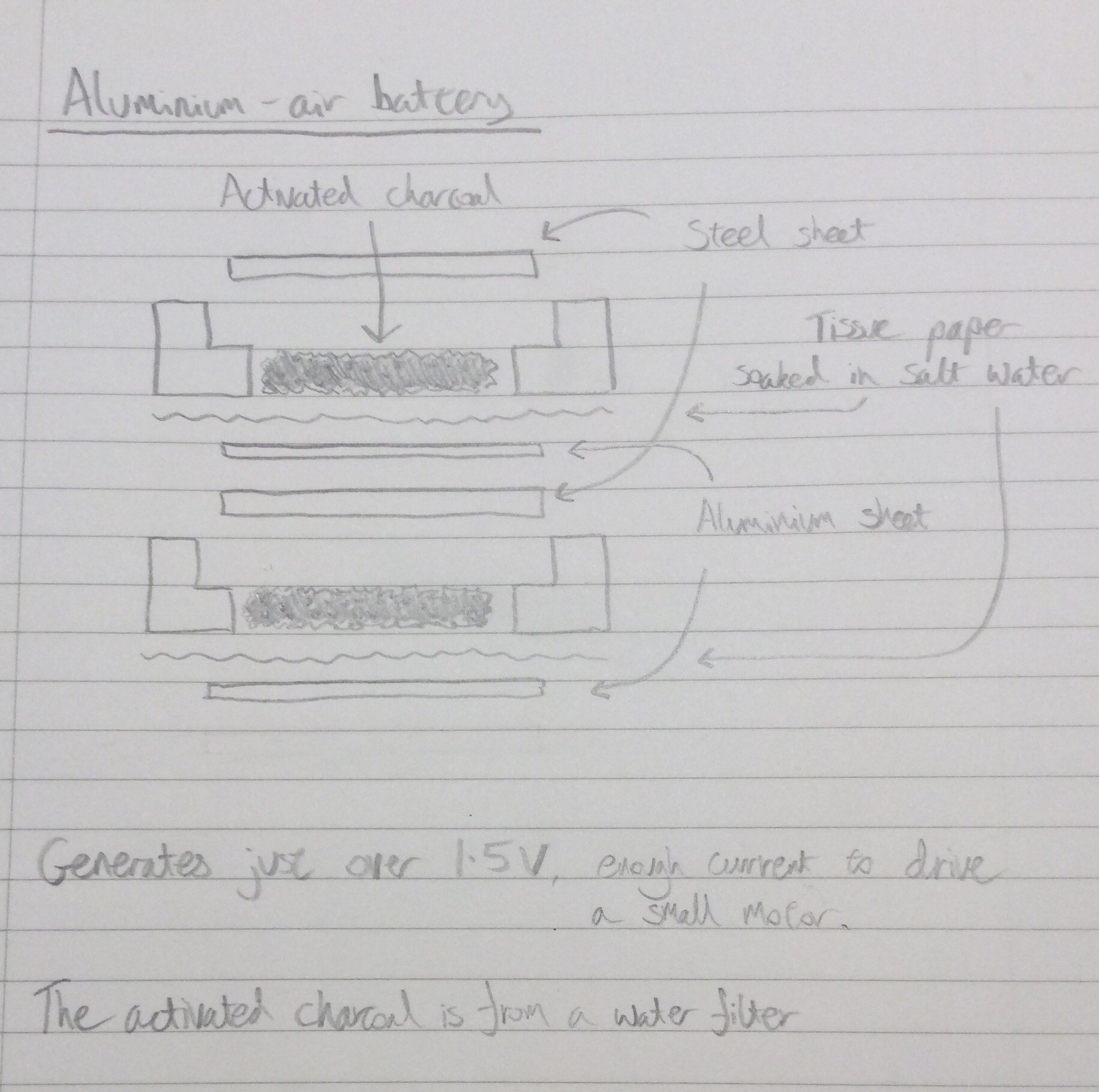One of the problems that remains to be solved in this project is how to provide electrical power to the system without greatly increasing the range of materials needed for the complete system. Plugging it into the wall wouldn't do, since this would depend upon the electricity generation and distribution infrastructure.
Homemade batteries seem like a promising alternative. Some batteries are very easy to construct, and will provide a constant voltage.
Googling homemade batteries and 19th century batteries leads me to believe that two promising alternatives are aluminium-air batteries (https://en.m.wikipedia.org/wiki/Aluminium-air_battery) and batteries using the gravity cell variant of the Daniell cell (https://en.m.wikipedia.org/wiki/Daniell_cell).
In terms of the simplicity of their construction, and the range of materials used in their construction, there is little to choose between them. The gravity cell requires copper sulphate, which is non-trivial to produce from raw materials. The aluminium-air battery requires activated charcoal, which I believe can be made from charcoal treated with an acid or alkali. I have a slight preference for the aluminium-air battery. I believe that potassium hydroxide solution (an alkali) can be obtained from wood ash, so this is a possible route for the production of activated charcoal.
Below is a video showing my first attempt to make an aluminium-air battery:
Here is a diagram showing how the battery is constructed:

A battery of six of these cells, with a surface area about twice as large as shown in the video, should be able to activate a single relay.
 will.stevens
will.stevens
Discussions
Become a Hackaday.io Member
Create an account to leave a comment. Already have an account? Log In.